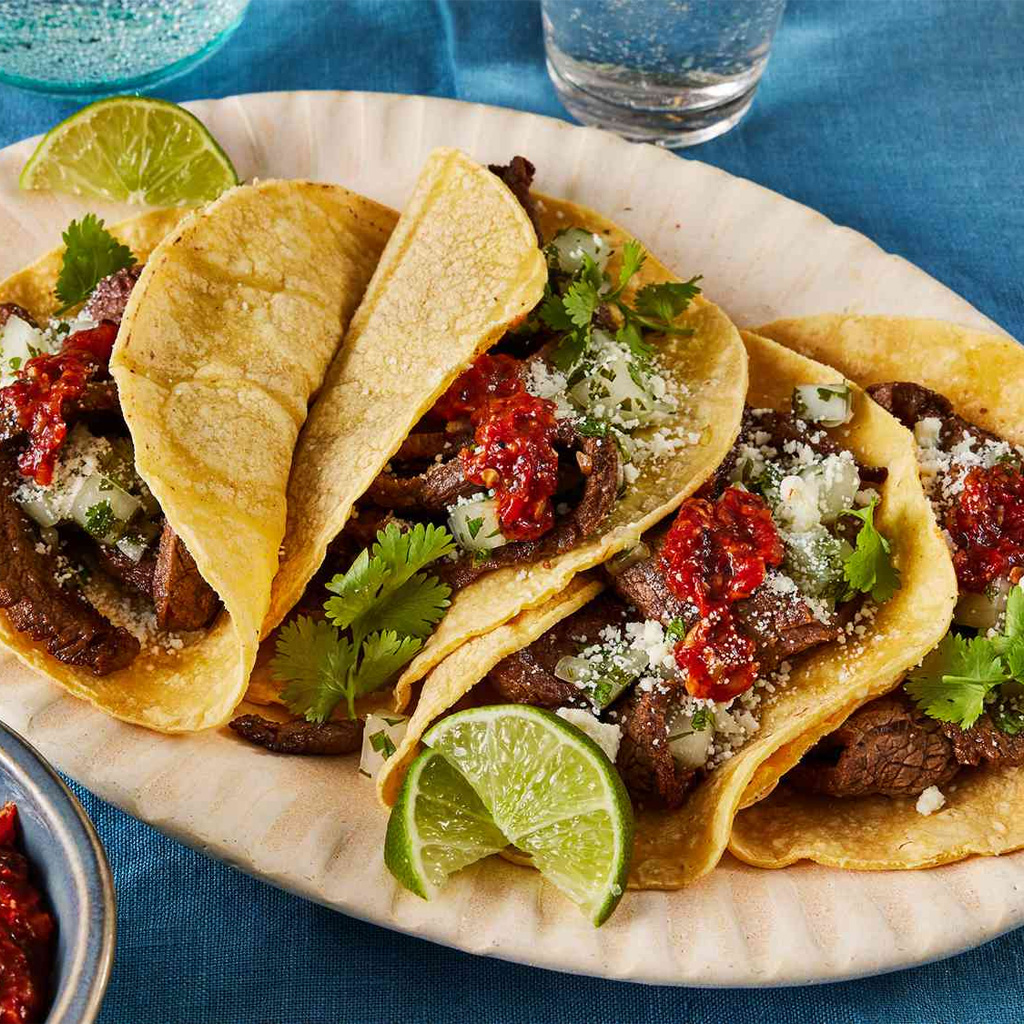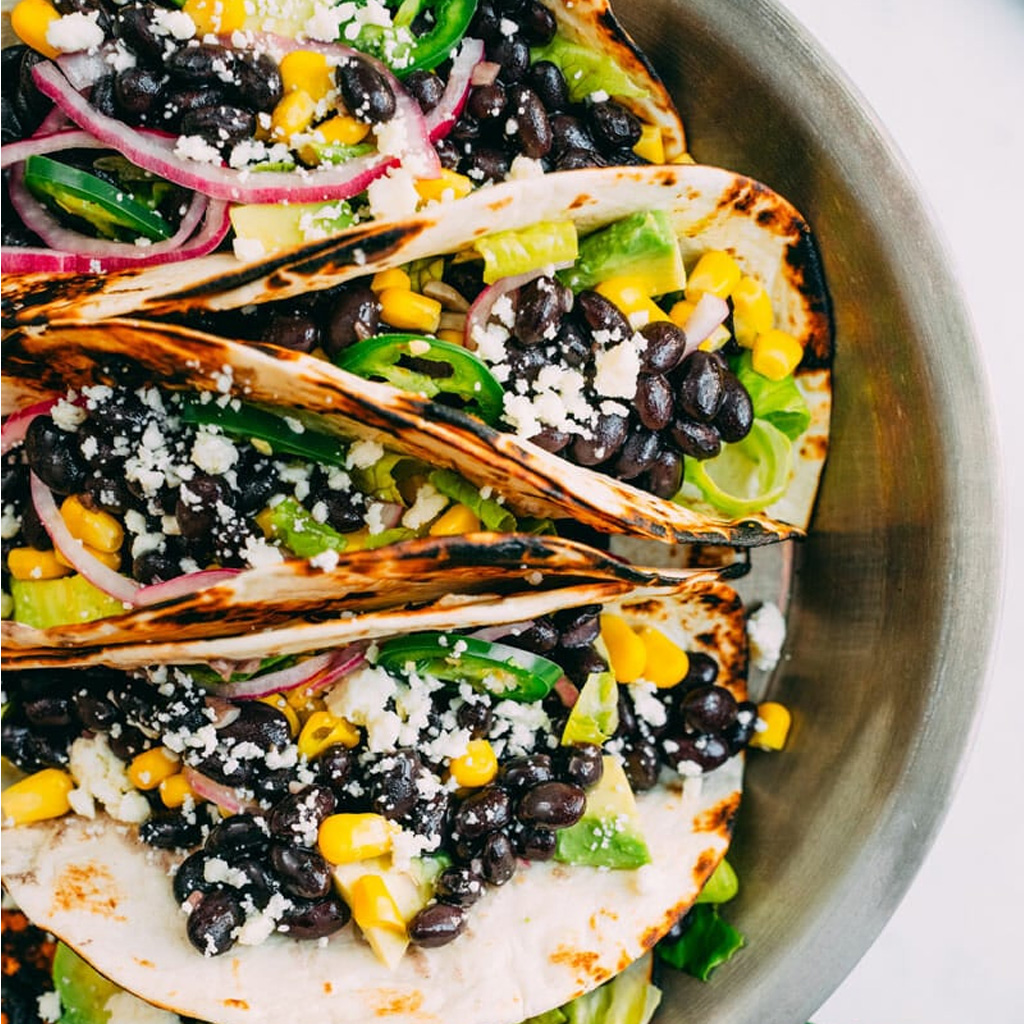Advertisement
Many think tacos have their origins as an ancient Mexican food. But contrary to popular belief, the modern Mexican street tacos that we see every day are relatively new.
Nowadays, you can hardly walk a mile without tripping over a taco stand. Variations range from carnitas, barbacoa, al pastor, and adobada, among many others. Even though they were invented in Mexico, people around the world love them.
Let’s take a deep dive into how Tacos came into existence in the first place and some delicious recipes that you can try at home.
Tracing the roots: The ancient history and modern evolution of tacos
The word “taco” stems from the Nahuatl word “tlahco.” It means “half” or “in the middle." This is how we fold it before taking a bite. The story of tacos starts with corn.
Around 3,000 BC, Mexicans cultivated corn by hybridizing grasses in the "Valle de Tehuac." Indigenous cultures saw corn as essential to life. They believed humans were made from corn.
Corn was vital for survival and improved their lives significantly. To make tortillas, corn kernels undergo an alkaline treatment to remove the husk. Then, they are ground into fine corn flour.
This process, called nixtamalization, dates back to the Olmec culture around 1,500 BC. It's likely they included simple cornbread in their diets.
Moctezuma, a famous Mexican leader, used these tortillas to scoop up his food. Spanish conquistador and explorer, Hernán Cortés, fed his soldiers pork-filled corn tortillas after conquering the Aztec empire.
However, Tacos in their present form aren't as ancient as you might think. Mexican cuisine has seen the addition of tacos to its menu more recently. While the exact origin of tacos is unclear, experts trace the development of this delicious dish through history.

The evolution of the modern taco
Authentic tacos emerged as a new kind of Mexican dish in the 19th century. This Mexican street food first originated in the busy silver mines of Mexico. The first known type was the "taco de minero," or "miner's taco."
According to experts, “taco” may have originally meant gunpowder, wrapped in paper that miners used to blow up the rocks. The taco's name might come from its resemblance to this. A small taco called a “taquito” looks like a stick of dynamite. It can feel spicy to someone who does not like chilies.
The Mexican working class took to tacos very fast. Taquerias, which are eateries or food stalls that specialize in serving tacos, started offering affordable meals. Migrant women brought tacos to Mexico City. Soon, the city became the country’s biggest taco hub.
In 1908, Cuautla and Morelos introduced new taco flavors. These included sausage, chorizo, green sauce, and pork rinds. Mole Verde and other favorites also appeared. Eventually, these tacos reached Cuernavaca, the capital.

The journey of tacos from Mexico to America
A critical economic crisis and job shortage in Mexico prompted the residents of Tlaxcala to come up with a modern method of selling tacos. Some of the unemployed inhabitants started creating and trading taco baskets. This tradition is still alive today.
Advertisement
Each morning, taco makers prepare taco baskets. Then, they leave home on bikes to sell their food in busy areas. Nowadays, many "taqueros" use vans for faster and larger sales.
This brings us to the famous "tacos al pastor." Tacos al pastor are special not just for their taste but because they reflect an outside influence on this Mexican dish. In the 1930s and 1960s, numerous Lebanese came to Mexico.
These people were liked by the Mexicans, who also integrated elements of Lebanese food into their diet. Al Pastor was born as a shawarma or Gyro recreation, with changes to the protein and marinade due to local ingredients.
Tacos were finally brought to America by Mexicans who were seeking railroad construction work in the southern states. By the early 1900s, Los Angeles streets had been lined with Mexican taco carts. These carts run by women were known as chili queens.
Tacos were viewed as street food for the poor by most Americans at that time. The taqueros used different ingredients from the Mexican versions because they had to use what was available locally.
Perhaps Taco Bell was the first American chain that brought mainstream attention to Tacos on a global level. Glen Bell started Taco Bell in 1962.
He brought tacos to America through a nationwide franchise. Tacos were already known in Mexico, but Taco Bell made them popular in the U.S. Many Americans tried Mexican cuisine for the first time at Taco Bell.

Some must-try taco recipes
Here are four delicious taco recipes that cater to every taste, from classic beef to vegetarian options. These easy-to-make dishes are perfect for adding excitement to your taco night.
●Traditional beef tacos
Take ground beef. Season it with chili powder, cumin, paprika, garlic powder, and onion powder. Cook until it is browned and is crumbly.
Additional toppings you should add include shredded lettuce, diced tomatoes, grated cheese, and sour cream. For extra flavor, squeeze lime juice on them or add some fresh cilantro.
●Chicken tacos with avocado salsa
Season chicken breasts with cumin, paprika, garlic powder, and salt. They can be grilled or pan-cooked, depending upon your preference. Shred the chicken.
Mix diced avocado, chopped tomatoes, red onion, cilantro, and lime juice for salsa. Serve chicken in tortillas. Top with avocado salsa and crumbled queso fresco.
●Fish tacos with cilantro lime slaw
Coat fish fillets with flour, paprika, and cayenne pepper. Pan-fry until crispy. Toss shredded cabbage and carrots with mayonnaise, lime juice, cilantro, and a bit of honey for slaw. Serve fish in tortillas. Add slaw on top. Garnish with lime wedges and chopped cilantro.
●Vegetarian black bean tacos
Stir fry onions and bell peppers until they are tender before adding black beans, along with cumin, chili powder, and vegetable broth. Cook until heated and slightly thickened. Serve in tortillas. Top with shredded cheese, diced avocado, and salsa. Add chopped cilantro and lime juice for freshness.
Tacos have evolved a great deal since their ancient beginnings to the present unique varieties. Today, tacos are a blend of historical influences and local adaptations. Try the abovementioned recipes at home to experience the delightful diversity of tacos.
Advertisement





